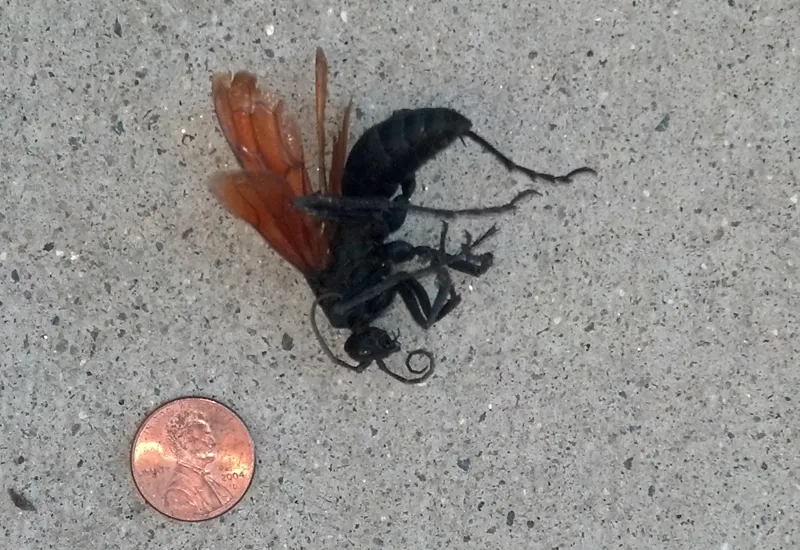Understanding the Tarantula Hawk
The tarantula hawk, a large, striking species of spider wasp, is infamous for its extremely painful sting. Found primarily in the southwestern United States, these wasps are a significant part of their ecosystem, preying on tarantulas. Understanding this creature is the first step towards knowing how to respond if you are unfortunate enough to be stung. Their vibrant colors, often a mix of blue-black bodies and orange wings, serve as a warning to potential predators. However, their striking appearance belies the significant pain their sting can inflict, making knowledge of first aid and treatment paramount.
What is a Tarantula Hawk
Tarantula hawks are members of the Pompilidae family, known for their hunting of spiders. The female tarantula hawk paralyzes a tarantula spider, drags it to a burrow, and lays an egg on its abdomen. The wasp larva then feeds on the paralyzed spider. These wasps are solitary creatures, and while they are not aggressive, they will sting if they feel threatened. Their sting is considered to be among the most painful insect stings, though, thankfully, rarely life-threatening.
Habitat and Behavior
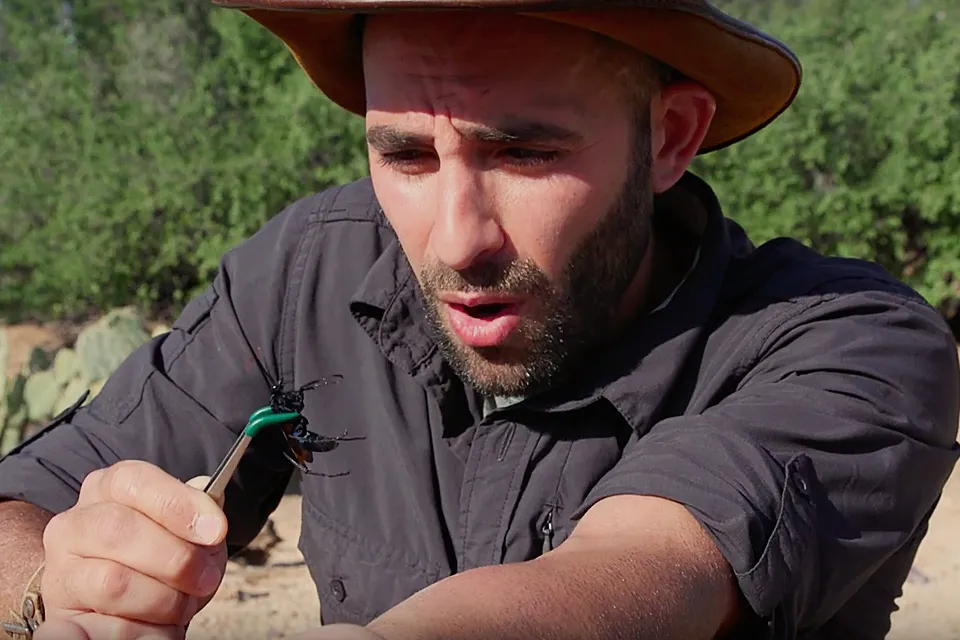
Tarantula hawks are typically found in arid and semi-arid regions. They are most active during the warmer months and are often seen near tarantula burrows. These wasps are excellent fliers and are capable of traveling long distances in search of prey. While the males feed on nectar and pollen, the females are the ones responsible for hunting tarantulas, which makes their sting a defense mechanism. Avoiding their habitat, especially during peak activity times, can reduce the chances of an encounter.
The Tarantula Hawk’s Sting
The tarantula hawk’s sting is not just painful; it is considered by many to be one of the most excruciating experiences in the insect world. The sting itself injects a potent venom that is designed to paralyze the tarantula, not to kill it immediately. When a human is stung, the effects are different but no less impactful. The immediate response is intense pain, which can last for several minutes to hours. This pain is often described as agonizing, making quick and effective treatment crucial for pain management.
Symptoms of a Tarantula Hawk Sting
The symptoms of a tarantula hawk sting are primarily centered around intense pain, which is the most immediate and prominent symptom. The pain can be described in many ways, from burning to throbbing, and it is usually localized around the sting site. In addition to pain, there may be swelling, redness, and heat at the site. These symptoms can last for several hours. In rare cases, more severe reactions can occur, making it essential to know what to look for and how to respond.
Initial Reactions and Pain Levels
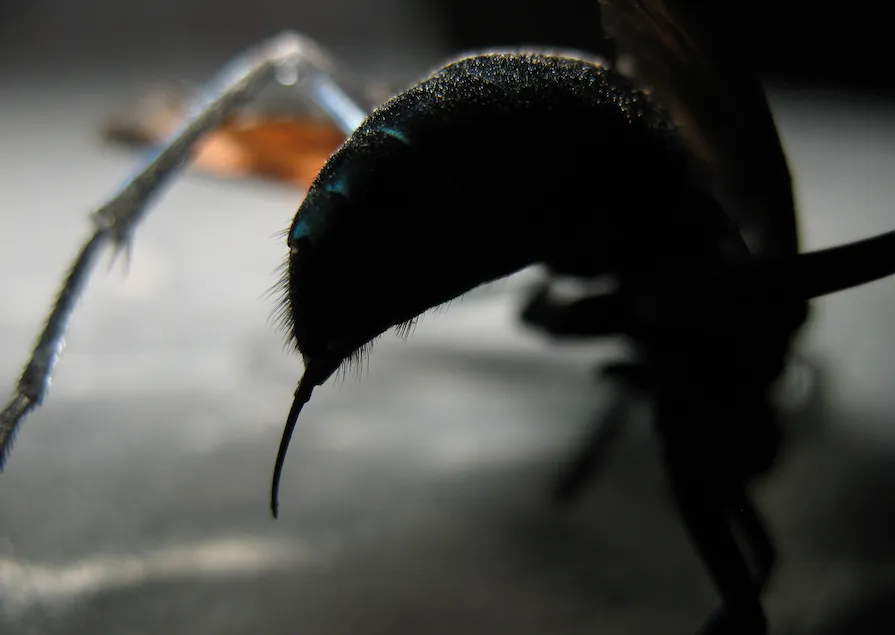
Immediately after being stung, the pain is often overwhelming. The intensity of the pain can vary, but it is generally considered to be a very high level on the pain scale. Initial reactions can include an immediate shock-like sensation followed by intense, throbbing pain. It’s crucial to remain calm, as panic can exacerbate the experience. The duration of this initial phase can range from a few minutes to an hour or more, depending on individual sensitivity and the amount of venom injected.
Allergic Reactions
While rare, allergic reactions to tarantula hawk stings are possible and can be serious. Symptoms of an allergic reaction may include difficulty breathing, swelling of the face, throat, or tongue, hives, dizziness, and nausea. Anyone experiencing these symptoms should seek immediate medical attention. Anaphylaxis, a severe allergic reaction, requires immediate treatment with an epinephrine auto-injector (EpiPen) and emergency medical services. Understanding the signs of an allergic reaction can save a life.
Immediate First Aid for a Tarantula Hawk Bite
If you are stung by a tarantula hawk, quick and effective first aid is essential to minimize pain and prevent complications. The steps you take immediately following the sting can greatly influence your recovery. Proper first aid includes removing the stinger, cleaning the wound, and applying cold compresses to reduce swelling and pain. Being prepared with the right knowledge and supplies can help manage the situation effectively.
Removing the Stinger
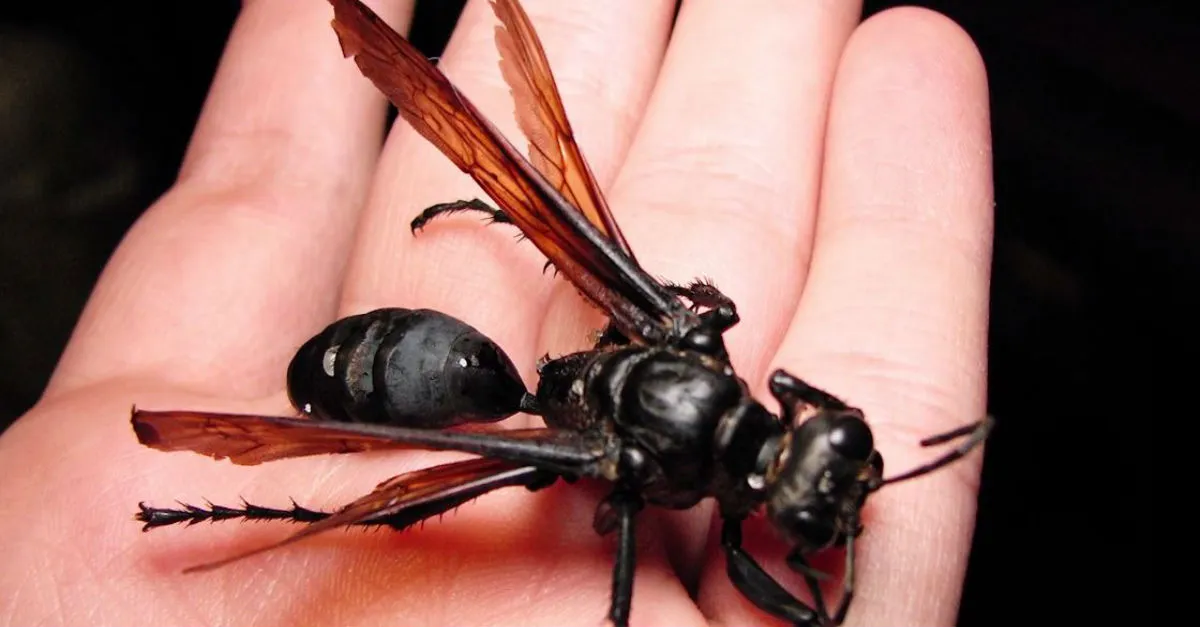
Unlike bees, tarantula hawks do not leave their stingers behind. Therefore, there is no need to remove a stinger in this case. The focus should be on managing the pain and treating the wound. However, it’s always a good idea to check the sting site to ensure there are no foreign objects present. If you notice any debris or a piece of the wasp’s body, gently remove it with tweezers, taking care not to squeeze or pinch the area.
Cleaning the Wound
Clean the sting site gently with soap and water. This helps to prevent infection and removes any remaining venom from the surface of the skin. Avoid using harsh chemicals or scrubbing the area aggressively, as this can irritate the skin and potentially increase the risk of infection. Pat the area dry with a clean cloth or allow it to air dry. Proper cleaning is a fundamental step in preventing secondary infections.
Applying Ice Packs
Applying an ice pack or cold compress to the sting site can help reduce pain, swelling, and inflammation. Wrap the ice pack in a cloth to prevent direct contact with the skin, which can cause further damage. Apply the cold compress for 15-20 minutes at a time, with breaks in between. This can provide significant relief and help to manage the discomfort associated with the sting. Continue to apply ice packs as needed for the first few hours after the sting.
Seeking Medical Attention
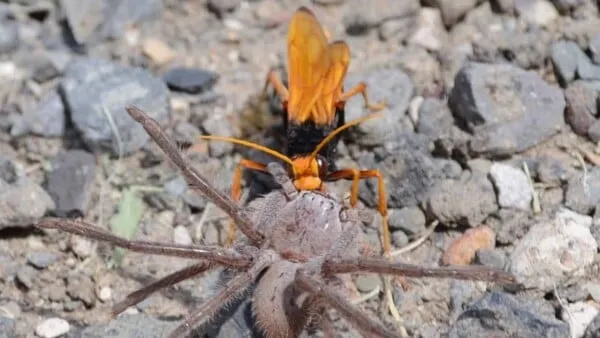
In most cases, a tarantula hawk sting can be treated at home with first aid measures. However, there are situations where medical attention is necessary. It is essential to know when to seek help to ensure the best possible outcome. Medical professionals can provide more effective pain management, treat allergic reactions, and monitor for complications. Don’t hesitate to seek professional help if you are concerned.
When to Seek Immediate Medical Help
Seek immediate medical help if you experience any signs of a severe allergic reaction, such as difficulty breathing, swelling of the face or throat, or hives. Other reasons to seek medical attention include persistent or worsening pain, signs of infection (increased redness, swelling, warmth, or pus), or if you are unsure about how to proceed. It’s always better to err on the side of caution when it comes to your health.
Treatment Options
Beyond immediate first aid, there are additional treatment options that can help manage the pain and discomfort of a tarantula hawk sting. These include pain management strategies and medications. The choice of treatment depends on the severity of the sting and the individual’s response. Understanding available options allows you to be prepared and to seek appropriate medical care when needed.
Pain Management Strategies

Various pain management strategies can help alleviate the intense pain associated with a tarantula hawk sting. Over-the-counter pain relievers, such as ibuprofen or acetaminophen, can provide some relief. Applying a cold compress can also help to numb the area and reduce inflammation. In severe cases, a healthcare professional may recommend prescription pain medications. Rest and elevating the affected limb can also help to reduce pain and swelling. Listening to your body and taking steps to manage the pain can significantly improve your comfort.
Antihistamines and Other Medications
If you experience any allergic reactions, such as itching, hives, or swelling, antihistamines can help to alleviate these symptoms. In more severe cases, a healthcare professional may prescribe corticosteroids or other medications to control the allergic response. If you have a known allergy to insect stings, always carry an epinephrine auto-injector and know how to use it. Prompt treatment of allergic reactions is crucial in preventing life-threatening complications.
Complications and Long-Term Effects
While tarantula hawk stings are rarely life-threatening, there can be complications and long-term effects. These complications range from secondary infections to psychological effects. Understanding these potential issues allows for prompt recognition and treatment. Knowing the potential long-term effects can help you to take proactive steps to maintain your health.
Infections and Secondary Issues
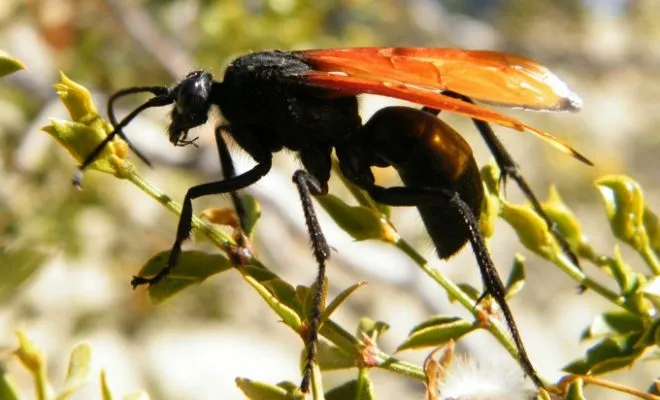
One of the most common complications is the risk of infection at the sting site. If the skin is broken, bacteria can enter, leading to an infection. Signs of infection include increased redness, swelling, warmth, pus, and fever. If you suspect an infection, seek medical attention immediately. Other secondary issues can include localized tissue damage and, in rare cases, nerve damage, which may cause persistent pain or numbness.
Psychological Effects
The experience of being stung by a tarantula hawk can be traumatic, and some people may experience psychological effects such as anxiety, fear of insects, and post-traumatic stress. If you are struggling with these effects, seek support from a mental health professional. Therapy and counseling can help you process your experience and develop coping mechanisms. Remember, it’s okay to seek help if you need it.
Preventing Tarantula Hawk Encounters
The best way to deal with a tarantula hawk sting is to avoid it altogether. Learning about their habitats and taking protective measures can significantly reduce your risk. Prevention is always the most effective strategy, and being informed can help you to stay safe in areas where these wasps are present. Taking these precautions can make your outdoor adventures more enjoyable and less stressful.
Identifying Tarantula Hawk Habitats
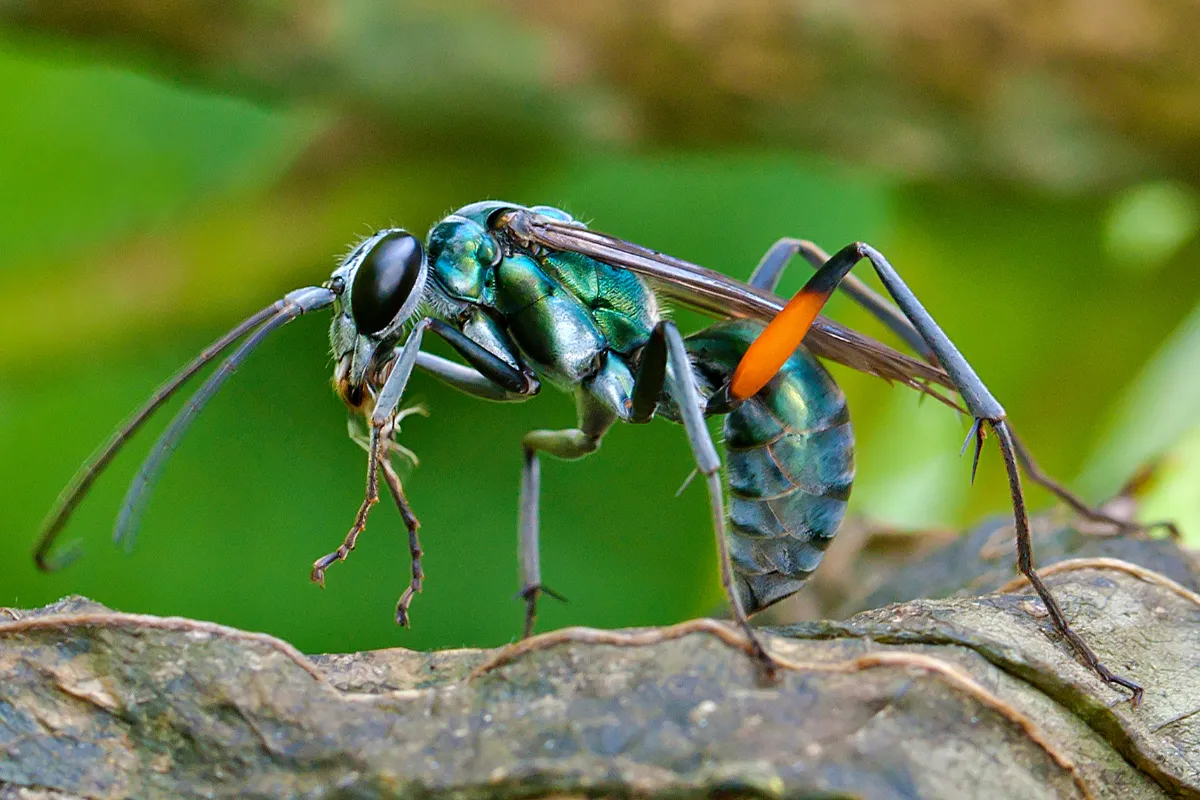
Tarantula hawks are commonly found in arid and semi-arid regions, such as the southwestern United States. They are often seen in areas with sandy or sparsely vegetated terrains. Familiarize yourself with these environments. Be particularly cautious near tarantula burrows, as this is where the wasps are most likely to be hunting or nesting. Paying attention to your surroundings is the first step in preventing an encounter.
Protective Measures
When in tarantula hawk habitats, wear protective clothing, such as long sleeves, pants, and closed-toe shoes. Avoid wearing brightly colored clothing, as it may attract insects. Be mindful of your surroundings and avoid disturbing any potential wasp nests or burrows. If you see a tarantula hawk, observe it from a distance and avoid making sudden movements. Carry insect repellent, although it may not be fully effective against tarantula hawks, it can help deter other insects.
First Aid Kit Essentials
Having a well-stocked first aid kit is essential when spending time in areas where tarantula hawks are present. Your kit should include soap, water, antiseptic wipes, and bandages for cleaning and covering the sting site. Include an ice pack or cold compress to help manage pain and swelling. If you are prone to allergic reactions, ensure you have an epinephrine auto-injector (EpiPen) and know how to use it. It’s also wise to have pain relievers like ibuprofen or acetaminophen. Being prepared can make all the difference in a situation like this.
Conclusion
Being stung by a tarantula hawk is an unpleasant experience, but knowing how to treat it immediately can significantly improve your outcome. From understanding the insect to applying immediate first aid and seeking appropriate medical care, being prepared can make all the difference. By taking the time to learn and prepare, you can minimize the impact of a sting and ensure a quicker recovery. Remember, prevention through awareness and protective measures is key to enjoying the outdoors safely.
